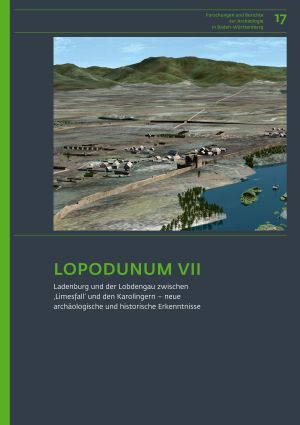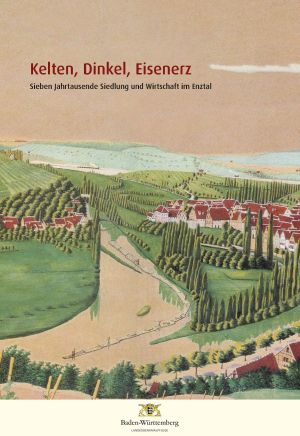Rabold, Britta
LOPODVNVM VII: Ladenburg und der Lobdengau zwischen ‚Limesfall‘ und den Karolingern
The town of Ladenburg looks back on a rich historical heritage: In the Roman era, Lopodunum was the capital of an extensive municipality, the civitas Ulpia Sueborum Nicrensium, and from the Carolingian period onward, Lobedtenburc is documented as the center of the Lobdengau. For the period in between, written sources are largely missing; all the more important are archaeological features and finds. The most important of these are presented in the volume at hand and embedded in the historical context. For instance, a group of Postumus coins from Ladenburg are presented, new interpretations of the late Roman burgus and the medieval ‘bishop's court’ are discussed, and recent findings on a Carolingian cemetery in the city area are presented. The surroundings of Ladenburg are represented by overviews on the richly equipped early medieval cemeteries of the region and on recent settlement excavations. Critical re-evaluations of written sources as well as historical-archaeological syntheses on the various possible scenarios of the 'Fall of the Limes' and on comparative regions such as the Palatinate in Late Antiquity complete the volume.
Kelten, Dinkel, Eisenerz: Sieben Jahrtausende Siedlung und Wirtschaft im Enztal
The Enz valley connects the former countries of Baden, Württemberg and the Electoral Palatinate and at the same time the landscapes of the Black Forest, Kraichgau, Stromberg, Gäu and the Middle Neckar Region. As it has been populated since the Linear Pottery Culture, the settlement development of the region can be retraced in an exemplary way. Due to political fragmentation, however, a historical overview is still missing. The volume at hand closes this gap and illustrates the settlement, economic and environmental history of the Enz valley over the past seven millennia from an interdisciplinary perspective.








